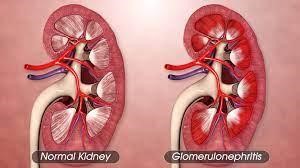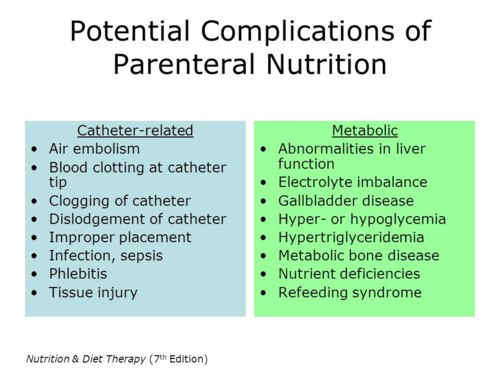The nurse is providing dietary education to a client newly diagnosed with Type 2 diabetes mellitus. Which information should the nurse provide?
Counting carbohydrates will ensure glucose levels stay within a normal range.
Many carbohydrates are found in starches and fruits.
It is best to count carbohydrates when it feels like blood glucose is low.
Examples of complex carbohydrates are white rice and cereals.
The Correct Answer is A
Choice A
Counting carbohydrates will ensure glucose levels stay within a normal range is accurate. When providing dietary education to a client with Type 2 diabetes mellitus, it's important to emphasize the role of carbohydrate counting in managing blood glucose levels. Carbohydrate intake significantly impacts blood sugar levels, and counting carbohydrates can help the client make informed decisions about their meals and medications to maintain glucose levels within a normal range.
Choice B
Many carbohydrates are found in starches and fruits is not accurate. Carbohydrates are present in a variety of foods, including starches (such as bread, rice, and pasta) but not fruits. Educating the client about sources of carbohydrates can help them make choices that support blood sugar management.
Choice C
It is best to count carbohydrates when it feels like blood glucose is low is not accurate. Counting carbohydrates is an ongoing practice that helps individuals with diabetes maintain consistent blood sugar levels throughout the day, not just when blood glucose feels low.
Choice D
Examples of complex carbohydrates are white rice and cereals is inaccurate. White rice and many cereals are actually exampling of simple carbohydrates. Complex carbohydrates include foods like whole grains, legumes, and vegetables. It's important to provide accurate information about carbohydrate types.
Nursing Test Bank
Naxlex Comprehensive Predictor Exams
Related Questions
Correct Answer is C
Explanation
Choice A
Following low carbohydrate diet with low glycaemic index foods is incorrect. This recommendation is not specifically related to the management of glomerulonephritis. While managing carbohydrate intake might be relevant for individuals with diabetes, it's not the primary focus for someone with kidney inflammation.
Choice B
Eating a high protein diet three times a day is incorrect: While protein is important for overall health and recovery, a high protein diet might not be the best recommendation for someone with compromised kidney function. Excessive protein intake could potentially put additional strain on the kidneys.
Choice C
Avoiding foods high in potassium is correct. Examples of foods high in potassium that the client should be cautious about include bananas, oranges, potatoes, tomatoes, spinach, and other fruits and vegetables. Glomerulonephritis is a condition involving inflammation of the glomeruli in the kidneys, which can affect kidney function and the regulation of electrolytes, including potassium. In glomerulonephritis, the kidneys might have difficulty filtering and excreting excess potassium, leading to a potential build-up of potassium in the blood (hyperkalaemia).
Choice D
Restricting sodium rich foods and excessive oral fluids is incorrect. This recommendation aligns more closely with managing fluid retention and blood pressure, which can be relevant for individuals with kidney issues. However, the primary concern in glomerulonephritis is often potassium balance, making the recommendation to avoid high potassium foods more pertinent.

Correct Answer is D
Explanation
Correct answer: D
Choice A
Urinary ketones are not most important. Monitoring urinary ketones can provide information about the utilization of glucose and fat as energy sources. However, it is not the primary lab value to monitor in TPN administration.
Choice B
Serum protein is not most important. Monitoring serum protein levels is important to assess nutritional status, but it might not be as immediate a concern as serum osmolarity.
Choice C
Serum osmolarity reflects the concentration of particles (such as electrolytes, glucose, and other solutes) in the blood. Monitoring serum osmolarity is importantto prevent complications related to fluid and electrolyte imbalances that can arise from the administration of TPN.Blood glucose levels (option D) are more critical because TPN can significantly impact glucose metabolism
Choice D
When caring for a client receiving total parenteral nutrition (TPN), the nurse’spriorityis tomonitor blood glucose levels. TPN can affect blood glucose, and observing for signs of hyperglycemia or hypoglycemia is crucial.Additionally, administering insulin as directed based on blood glucose levels is essential.

Whether you are a student looking to ace your exams or a practicing nurse seeking to enhance your expertise , our nursing education contents will empower you with the confidence and competence to make a difference in the lives of patients and become a respected leader in the healthcare field.
Visit Naxlex, invest in your future and unlock endless possibilities with our unparalleled nursing education contents today
Report Wrong Answer on the Current Question
Do you disagree with the answer? If yes, what is your expected answer? Explain.
Kindly be descriptive with the issue you are facing.
